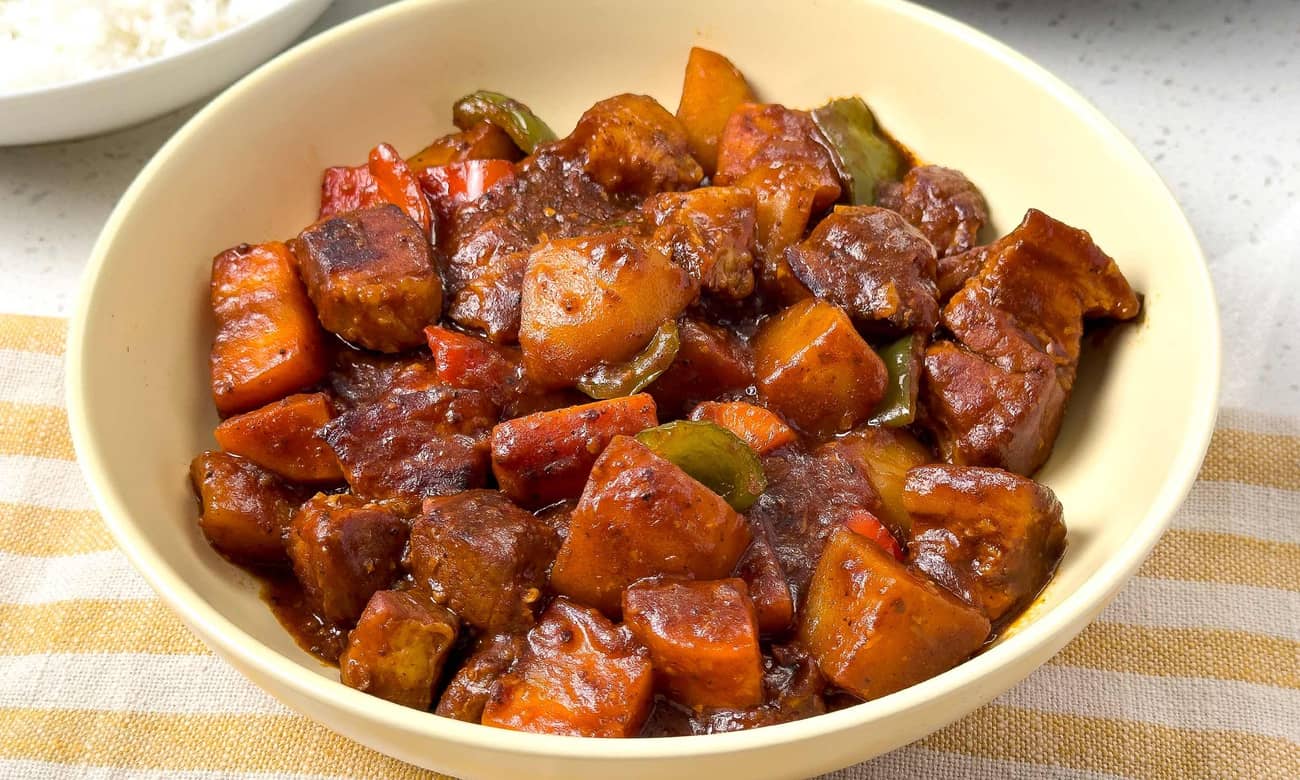
These sweet, savory, and sticky caramel adobo ribs will have you licking the sauce right from your fingertips. Extra rice, please!
The salty, sour, and garlicky flavors of a classic adobo are hard to beat. It’s the perfect representation of all the flavors that Filipinos love, which is probably why we’ve found about a hundred ways to adobo everything: from the classic chicken or pork adobo, to adobo rice and flakes, regional variations, and unconventional cuts like beef shank.
This version takes it down the sweet route. The flavors from soy sauce, vinegar, bay leaf, and garlic are rounded out with caramelized brown sugar. This gives the final dish a beautiful lacquered shine, and a savory-sweet taste that will have you sucking the meat and sauce right off the bones.
Not cooking ribs for long enough results in tough meat that will make your jaw ache from how hard you need to chew. But when done right (AKA braised in broth or sauce for an hour or two), the connective tissues in bone-in cuts lock in the moisture as they cook low and slow. You’ll also get a deep, meaty flavor from letting the bones cook in the sauce. With a little bit of patience, you’ll end up with a dish that’s so flavorful and tender it might bring you to tears.
This recipe starts with a wet caramel, asking you to dissolve sugar into a bit of water until it turns deep brown and syrupy. But make sure not to mix too much! Excessive agitation will cause the sugar syrup to turn cloudy and hard, on its way to becoming crystals again. Stir with a rubber spatula over medium heat, gently and sparingly, until the syrup turns a deep amber color, and your kitchen is filled with that delightful burnt sugar smell.

We don't just copy random recipes. We taste test every single one.
Easily search and save your favorites.
Chefs develop our food with techniques made easy for home cooks.
Make caramel: In a large pot over medium heat, add brown sugar and 2 tbsp water. Stir occasionally and gently, and continue to cook until the sugar melts into a syrupy caramel consistency. Make sure not to stir vigorously to avoid crystallization.
Combine: Add pork ribs, and stir until the caramel coats each piece of meat. Then, add white vinegar, soy sauce, garlic, bay leaf, and whole black peppercorns. Mix well to combine.
Simmer: Turn the heat down to medium and bring to a steady simmer. Continue to simmer for 1 ½ hours, uncovered, stirring occasionally to ensure that the bottom does not burn. At around 1 ½ hours, when the liquid has reduced and the pork is tender, the fat will separate. This is normal. Test the pork’s tenderness by piercing with a fork. If the fork is able to pierce the meat without any resistance, it’s tender and ready. If the ribs are still tough, continue simmering to fork-tenderness, adding 1 cup of water at a time if the sauce becomes too dry.
Serve: Once the liquid has fully evaporated and the sauce has been reduced to a sticky consistency, remove from heat. Garnish with red chilis and green onions (if using). Serve hot.
